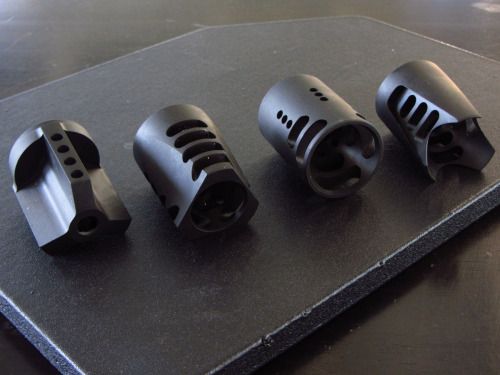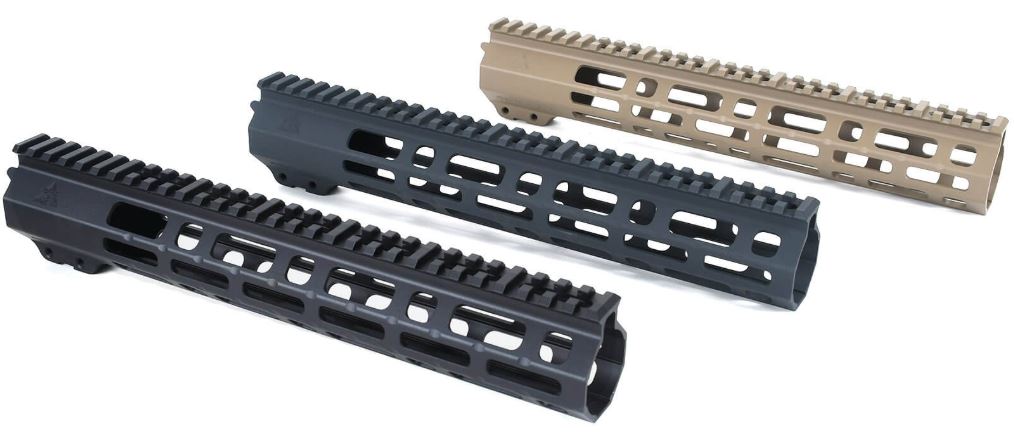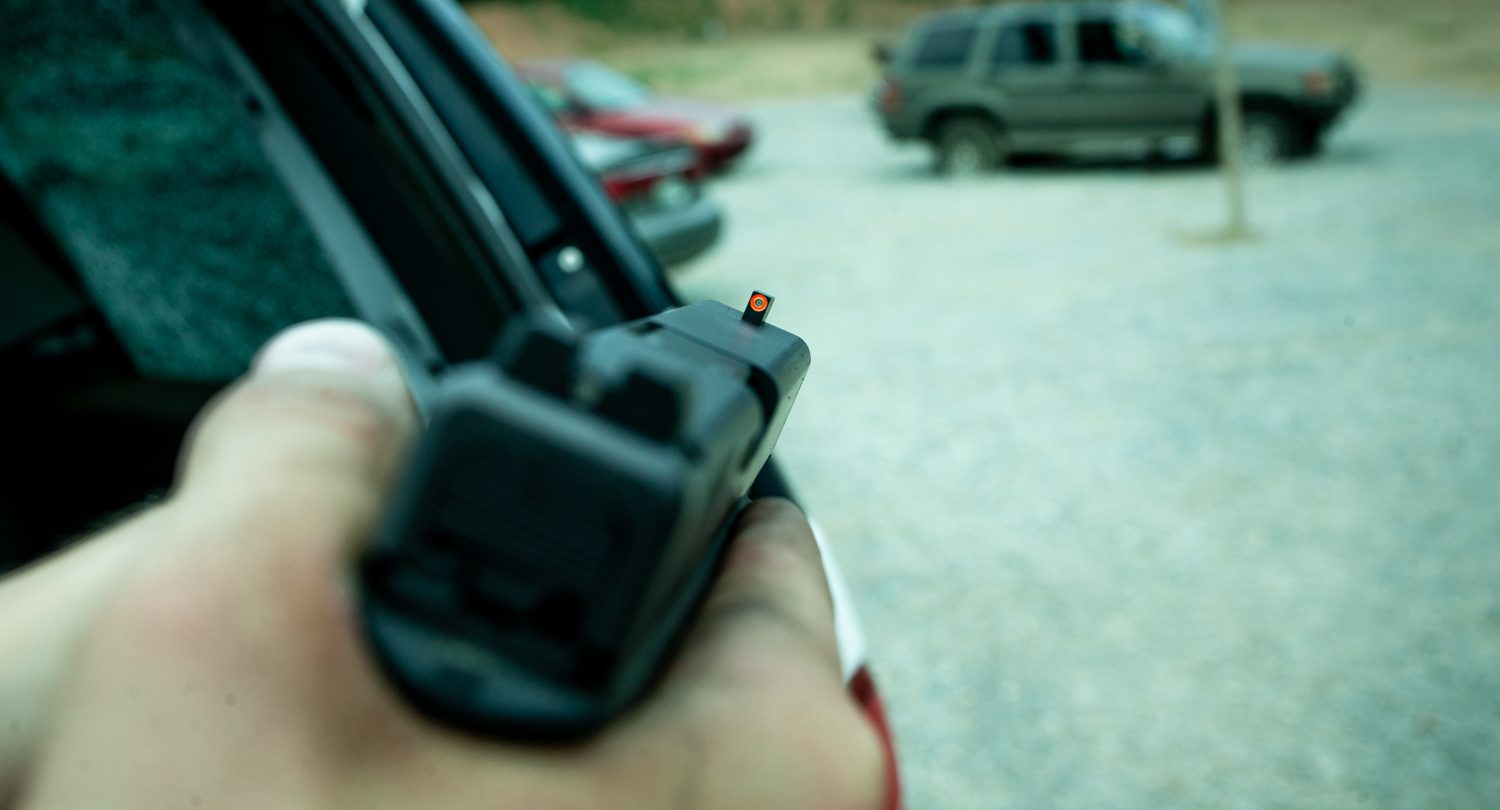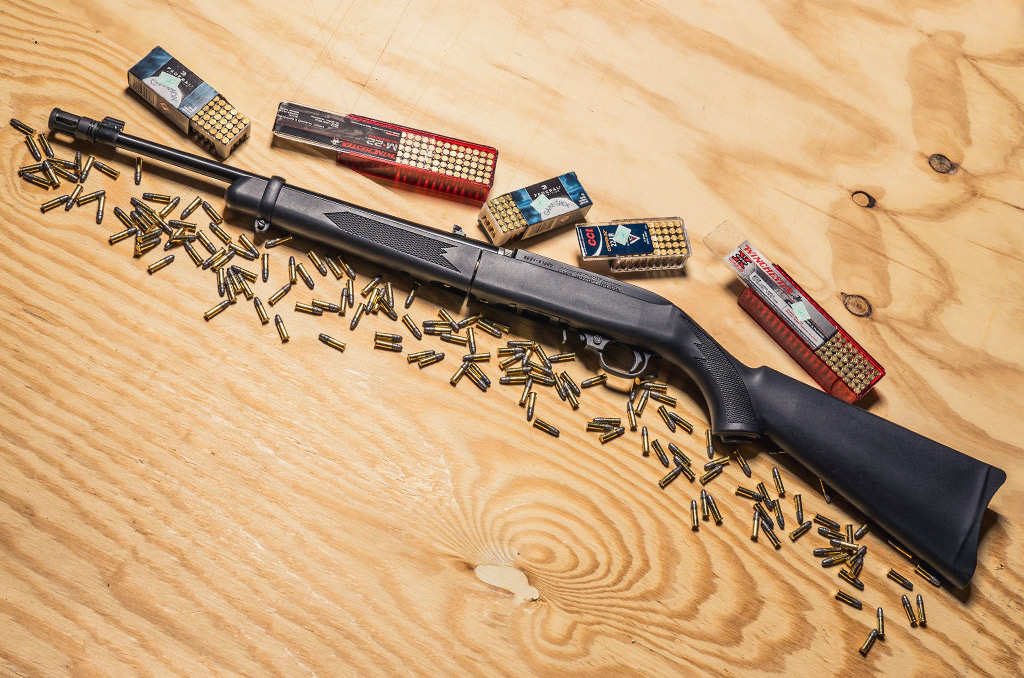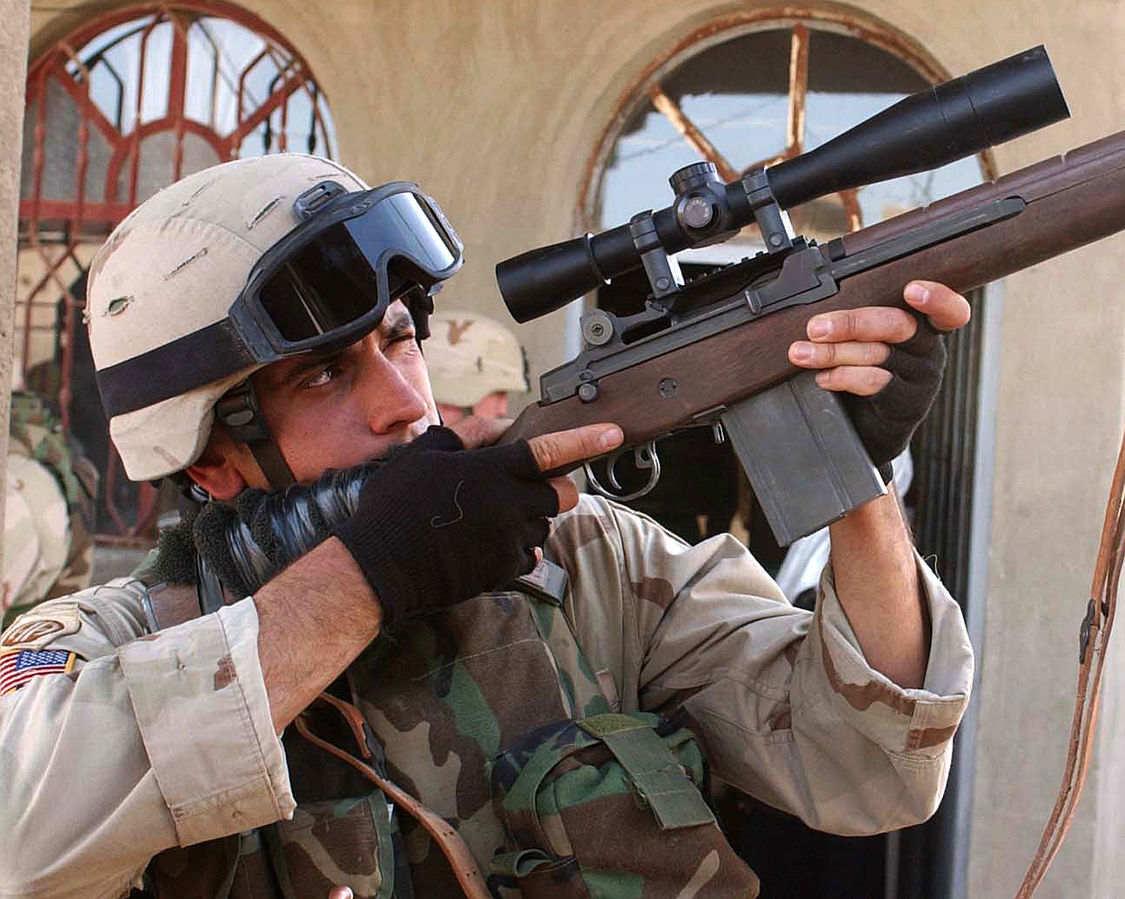Do you ever feel confused by all the barrel options available for your AR-15? What is the difference between chrome-lined and melonite lined? Pencil, government, or bull barrel? Cold hammer forged or mil-spec?
A quality rifle barrel can make a good gun great, and a poor one can ruin an otherwise stellar firearm–which is why we’re here to help you understand what you need to know to choose an amazing new barrel for your AR-15.
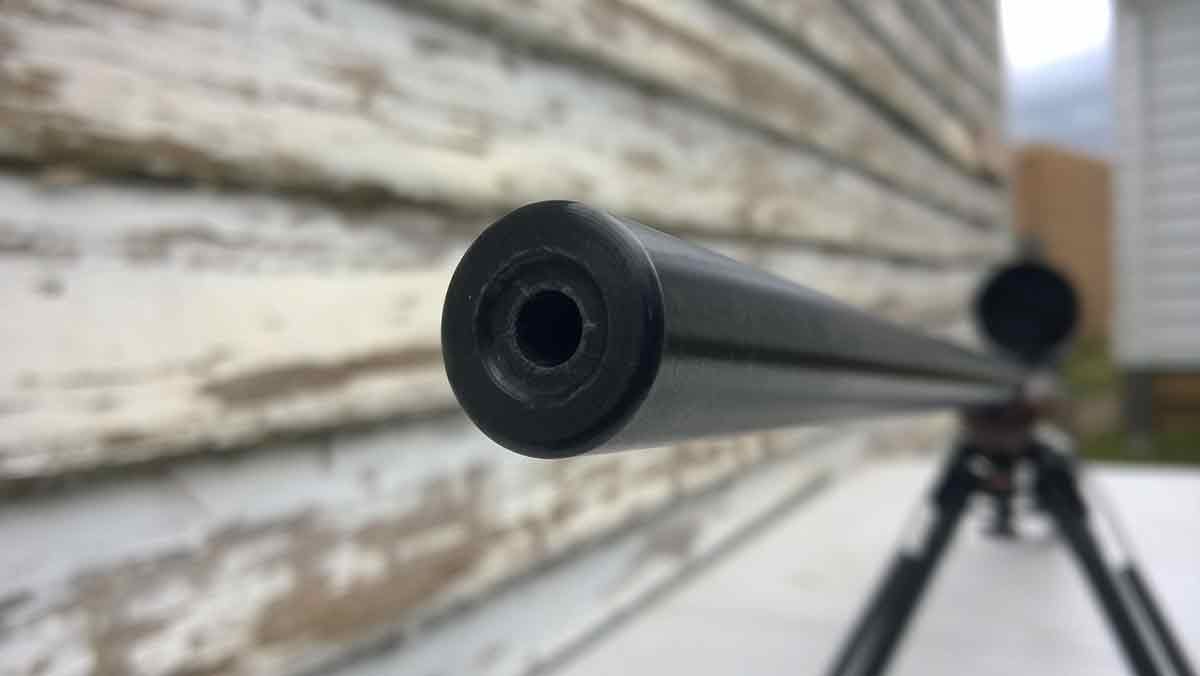
We’re going to shed a little light on the issue by showing you how to choose your barrel, as well as what the pros and cons of different styles of barrels.
Finally, we’ll talk a little bit about who our favorite barrel manufacturers are, and which of their products you should look into, based on your individual needs.
Let’s get started!
What Makes a Good Barrel So Important?
Well, without a barrel, you don’t really have a gun… just some parts that kind look like one.
Seriously, though–the barrel of your AR-15 has a huge impact on the accuracy and performance of your rifle, more so than almost any other part.
There’s a surprising amount of engineering that goes into these barrels, and while swapping back and forth is relatively easy, you’ll want something that not only performs well but also is sturdy enough to last you for years.
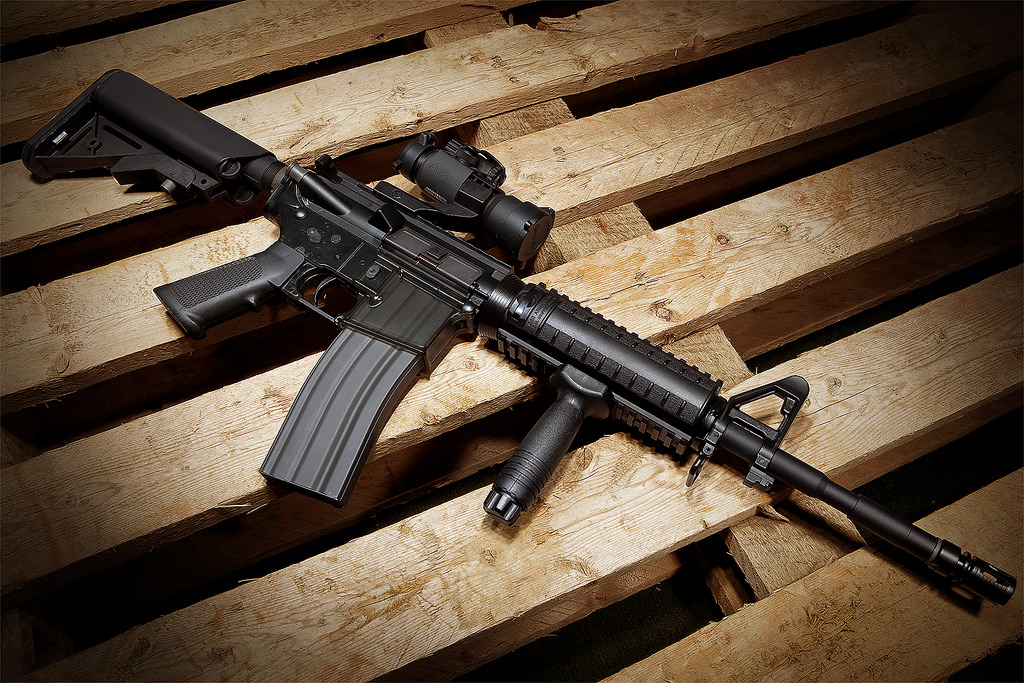
A low-quality barrel will have inconsistencies that can cause your shots to land well wide of your point of aim. If you have a barrel that’s flexing, expanding, unevenly-coated or otherwise changing shot to shot, your rounds just aren’t going to land as accurately, no matter how well you’re shooting otherwise.
This can be incredibly frustrating because, while you might be doing everything right from a technique standpoint, you still won’t be shooting in a way that’s reflective of your skill level.
There’s nothing worse than feeling like you nailed a target, only to have the shot miss due to an issue with your gun.
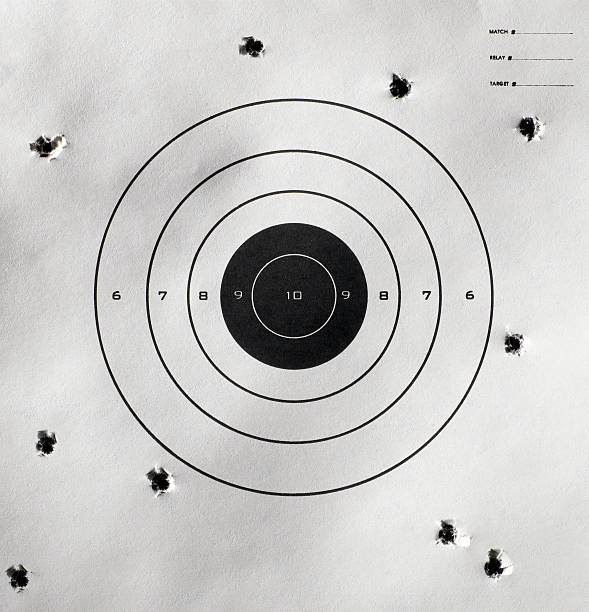
The other issue is you can have a barrel that’s very mechanically accurate, but is constantly developing surface rust or wearing out quickly. These barrels make for poor investments and can ruin a day at the range just as fast as an inaccurate barrel will.
So how do you choose a barrel that won’t let you down? Well, first you have to understand a little bit about how these barrels are made, and what can be done to produce the best barrel possible for your gun.
Let’s take a closer look.
Understanding AR-15 Barrel Terminology and Classifications
There are a few terms and characteristics of AR-15 barrels you need to understand in order to pick the best one for your rifle.
Length
One of the most important characteristics of an AR-15 barrel is the length. You can find barrels from short 7” offerings all the way up to 24”. Anything longer than this is going to offer sharply diminishing returns. You really don’t need anything over 20” at most, though 16” barrels are the most popular choice.
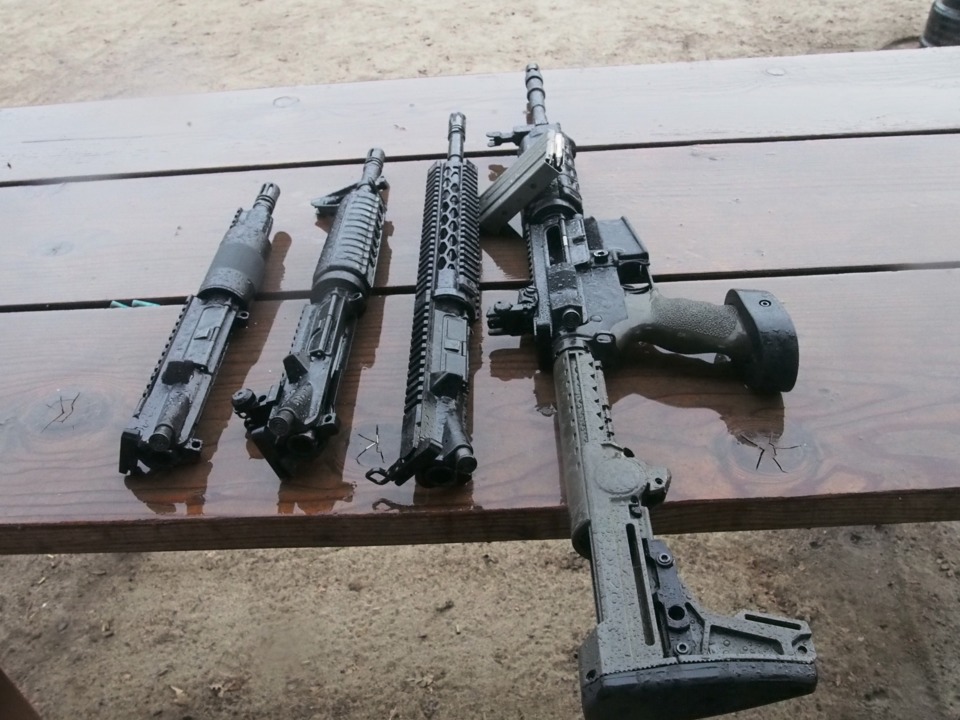
It’s worth noting that anything under 16” requires either a tax stamp if you’re making it a short-barreled rifle, or must be configured as a pistol that’s not (technically) designed to be shouldered like a long gun. You also should check in with your local laws, too.
If you’re going for long-range accuracy, a longer barrel in the 18-20” range is going to give you the best results, while a shorter-barreled option is going to be lighter, and easier to move indoors, or around barricades and other obstacles.
If you want a do-it-all rifle, go with the 16” barrel as this is the easiest path to a middle ground between maneuverability and long-range performance.
Profile
The barrel profiling refers to the thickness and weight of the barrel.
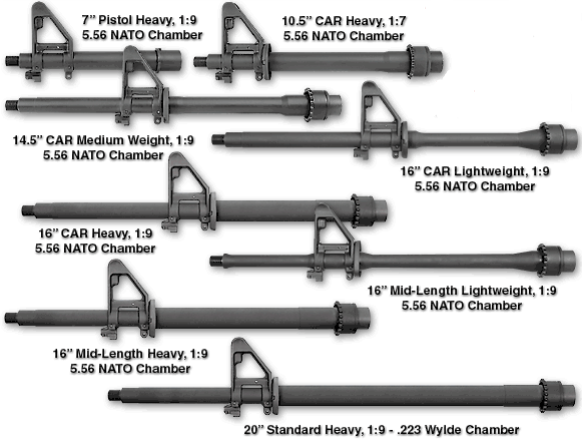
The most common is the “government” profile barrel which is a mid-range option. The lightweight, or pencil, barrels are good for those looking to shave some weight off their gun. Heavy, or bull, barrels are thicker and weigh more, but offer more heat-resistance and stiffness, which both increase accuracy.
Cold Hammer Forged vs. Mil-Spec
This one is pretty easy. Cold hammer forged barrels are beaten into shape with a hydraulic hammer that applies even compression to all sides of the barrel blank.
This process, while slightly more expensive than a normal forging, aligns the grain structure of the metal, while compressing it for strength. What you’re left with is a barrel that is stronger and more resistant to flexing than it otherwise would be.
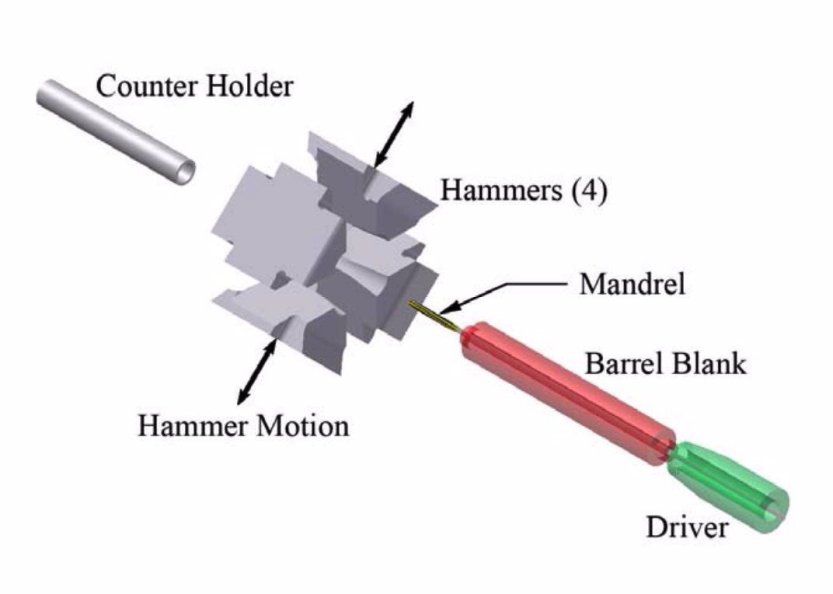
While you’ll pay around $80 more for a CHF barrel, it’s typically worth it, especially in a pencil barrel, or for a barrel that’s likely to see lots of use.
Mil-Spec, on the other hand, is a term that refers to the specifications used by manufacturers who build weapons for the military. Not every barrel labeled mil-spec is actually mil-spec (unless you’re buying from Colt or FNH, the two manufacturers who build guns for our military), but they share certain compatibilities.
Barrel Lining
There are three different processes for coating or lining an AR-15 barrel, and each one has its own benefits and drawbacks.
First, we have chrome-lined barrels. The chrome lining in the barrel reduces friction, helps dissipate heat, and makes the barrel far more resistant to corrosion from water, salt, oils, and powder fouling.
It can also have a strongly negative impact on accuracy as the chrome lining process creates uneven patches inside the barrel, which can cause major deviations in accuracy, especially at longer ranges.
In general, for a rifle that’s likely to be “ridden hard and put up wet” or one that will likely never be used as a match rifle, chrome lining is perfect as it increases barrel longevity immensely.
Next, we have stainless steel barrels, which aren’t so much lined as they are just made of stainless steel. Now, contrary to popular belief, stainless steel will absolutely rust.
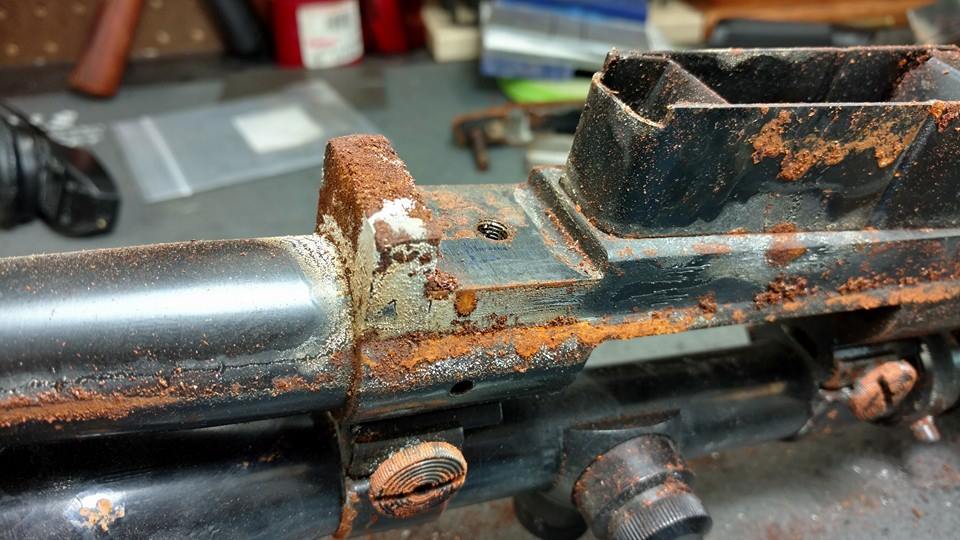
stainless steel barrel.
In general, stainless steel barrels are much less corrosion-resistant than chrome-lined barrels, but a stainless barrel that’s used occasionally, and/or cleaned properly should be just fine–unless it’s left to sit in salt water or is exposed to harsh chemicals for a long period.
These harsh chemicals include the oil from your fingerprints, so make sure you wipe the outside of the barrel down with a protective oil and wipe fingerprints off when you can.
The chief benefit of a stainless barrel is the increased accuracy you get from having more precise and consistent rifling. No chrome lining means no rifling inconsistencies to throw off your shot.
This is why most “match” barrels are stainless steel, and why you’ll usually only see them on rifles designed to run literally like a well-oiled machine, rather than on guns that will see rough use in harsh environments.
This really highlights one of the chief choices when it comes to firearms: you can either have accuracy, or reliability. The more precisely machined everything is to a tight tolerance, the more accurate it is, but also the most susceptible it is to malfunction or performance loss due to dirt, grime, or wear.
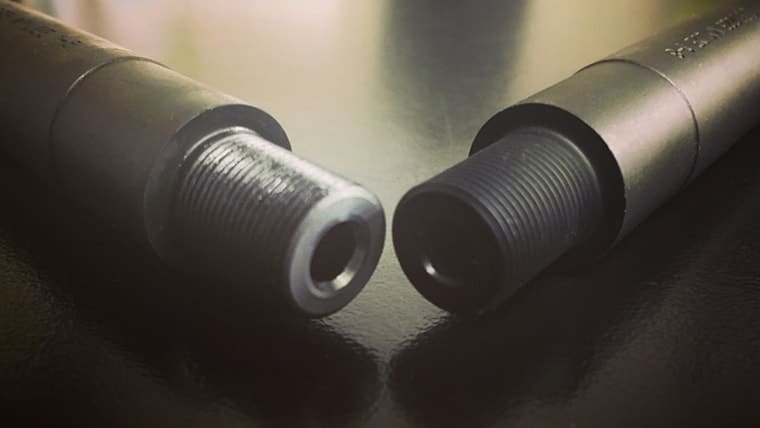
When it comes to barrel linings, there’s another middle ground, however: nitride meloniting. A melonite-coated barrel combines the protection of a chrome-lined barrel with the accuracy and consistency of a steel match barrel.
This is achieved through the salt nitride meloniting process, which adds a protective layer over the metal (all of the metal, even the outside) but does so by altering the surface layer of existing metal.
That means no extra material to throw off your accuracy. Everything stays neat, clean, and protected while maintaining maximum accuracy. Of course, this option is still more expensive than steel or chrome-lined barrels, so you’ll have to decide if the extra cost is worth the benefits.
Twist Rate
Twist rate is a ratio of rifling twist to inches of barrel length. You’ll see it written like “1:8 twist,” “1:7 twist,” etc.
In the case of 1:7 twist, this means the rifling of the barrel completes one full revolution (and thus imparts one full spin to the bullet) every seven inches. AR-15 barrels typically come in 1:7-1:14 twists, with 1:9 being the most common.
The twist rate is important because it determines how stable your bullet is going to be once it leaves the barrel because that spin is what stabilizes it as it travels through the air, and the different twist rates are tailored to different bullet weights.
Here’s a good set of rules to follow in general when it comes matching 5.56×45 ammo to a barrel twist rate:
- 1:12-1:14 = 35 to 50 grain
- 1:9-1:10 = 45 to 70 grain
- 1:7-1:8 = 69 to 90 grain
Best Barrel Manufacturers For Every Budget
Now for the recommendations. We’ve installed, tested, beat, shot, and otherwise tortured just about every AR-15 barrel manufacturer’s best products, and these are the manufacturers that we’ve found to be the best.
PROOF Research AR-15 Barrels
First, let’s get the best of the best out of the way. PROOF Research is an aerospace manufacturer that got into the AR-15 game a while back, and they hit the ground running with a space-age offering that is, in this humble gun writer’s opinion, the best barrel around.
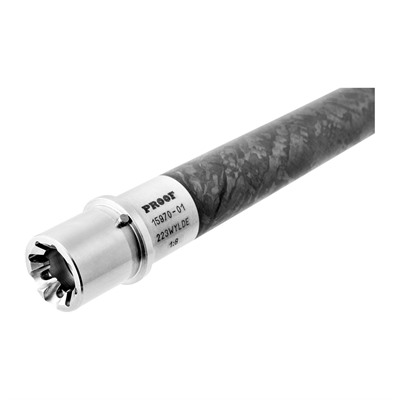
PROOF Research AR-15 Carbon Fiber Barrel
Pros
- Best-of-the-best design and manufacturing
- Exceptionally strong and heat resistant
- Lightweight
Cons
- Expensive
PROOF Research specializes in carbon fiber-wrapped barrels that give you the lightweight characteristics of a thin pencil barrel, but the heat-dispersion, longevity, and stiffness of a heavy barrel.
These barrels are some of the most accurate and consistent on the market, and the carbon fiber wrapping makes them some of the longest-lasting as well.
So why not just buy one of these and call it a day? End the article here?
One word: price.

PROOF Research barrels start at about the same price as a whole mid-range AR. The lowest prices I’ve ever seen were still over $600 for an AR barrel, with bolt-action barrels a hair cheaper.
So, if you’ve got the money, or you’ve saved up and just want the best damn barrel out there, this is the one I recommend. Just pick the length and twist rate you want and know you’re getting a product that’s the end result of years of research and development by some of the best manufacturing folks in the business.
Ballistic Advantage AR-15 Barrels
Ballistic Advantage barrels are great not only because of their performance and precision manufacturing–but also because there’s just so many of them.
BA makes barrels for a number of manufacturers and builders, including Aero Precision, and as such, they have a wide variety of products available in different lengths, finishes, and profiles.
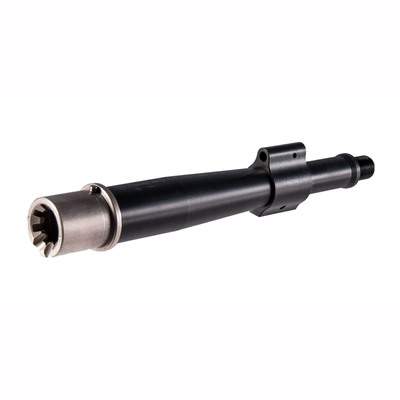
Ballistic Advantage AR-15 Hanson Barrel
Pros
- Proprietary design eliminates barrel whip
- Light weight barrel with the rigidity of a heavy barrel
- A variety of length options
Cons
- Limited rifling options
They also make the proprietary “Hanson” barrels, which have no gas block shoulder, which allows for a more symmetrical barrel that has improved harmonics.
You have three different lines to choose from with Ballistic Advantage: Modern, Performance, and Premium. Modern is sort of the budget, plain-Jane line, with Performance being tuned for greater accuracy, and finally Premium is a no-holds-barred beast that’s fluted for an even more rigid barrel that should be just about as accurate as anything on the planet.
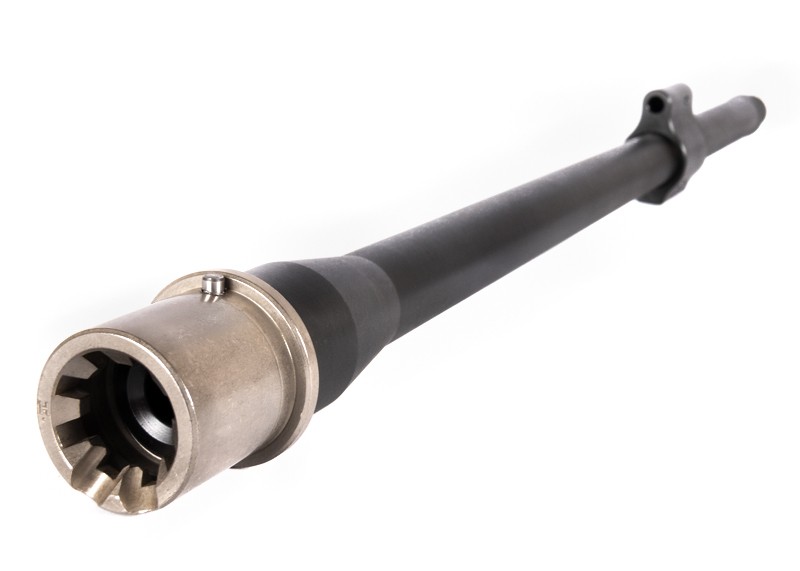
This variety of product offerings is the chief driving factor behind the success of Ballistic Advantage. They have a barrel for every shooter, and they churn out enough of them to get every shooter a barrel, no matter what kind or size of barrel they need.
Faxon Firearms AR-15 Barrels
Finally, we have Faxon Firearms, one of the most prolific AR-15 barrel makers, and arguably the best value around.
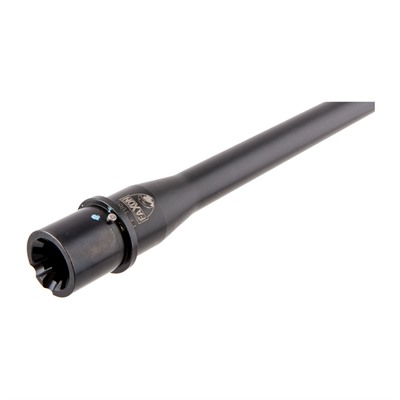
Faxon Firearms AR-15 Government/SOCOM Barrel
Pros
- Great variety of lengths and twist rates
- Button rifled
- Nitrite coating for durability
Cons
- Accuracy isn't as good as other barrels out there
If you’re building a gun that needs to be accurate, but not tack-driver accurate–or one that needs to be durable and corrosion-resistant, but not quite to the point where you can soak it in acid and light it on fire and expect it to fine–Faxon has a number of offerings that are great investments.

They’re also a great value, but cheap doesn’t always necessarily mean cheaply made, and that’s certainly not the case here. Faxon has worked hard to provide everything from short, 7” pencil barrels to 20” bull barrels at prices that the average shooter can afford without taking out a new mortgage.
Conclusion
That about does it for this one. We hope you’ve learned everything you needed to know about AR-15 barrels. In general, changing a barrel out is easy, and provided you’ve picked one that’s right for you, can seriously improve your AR, and your trips to the range.
Thinking about picking up a new AR-15 barrel? Which one of these barrels do you like the best? Let me hear from you in the comments below! Don’t forget to check out the rest of our favorite AR-15 upgrades.


